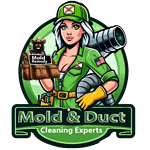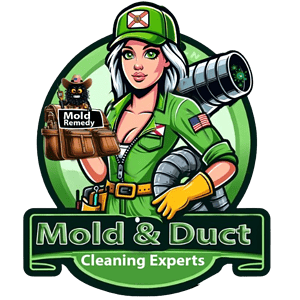Mold is frequently found in places with high moisture and humidity levels. While many consider it a minor problem, certain types of mold can have significant health implications, leading to mold toxicity. This condition differs from regular allergic reactions and can affect anyone, but it’s especially concerning for those with sensitivities or weakened immune systems.
In this article, we will explore 10 warning signs of mold toxicity. The nature of mold, the specifics of mold toxicity, and the important symptoms that should be addressed immediately. We will also discuss strategies for prevention and recovery, aiming to equip readers with knowledge to protect themselves and their families.
What is Mold?
Mold is a type of fungus that can be found both indoors and outdoors. It thrives in warm, damp, and humid conditions, spreading and reproducing by making spores. Mold spores can survive harsh environmental conditions, such as dry areas that do not support normal mold growth. In nature, molds play a key role in decomposing organic matter; however, when they grow unchecked within homes, they can pose significant health risks.
What Is Mold Toxicity?
Mold toxicity refers to adverse health effects caused by exposure to mold and its byproducts. Unlike mild allergies, which are generally limited to sneezing and irritation at the point of contact, mold toxicity involves a broad range of symptoms that can affect multiple systems in the body. This condition is triggered by mycotoxins, toxic substances produced by certain molds. Mycotoxins can enter the body through inhalation, ingestion, or skin contact, leading to a condition often referred to as “Toxic Mold Syndrome.”
The symptoms of mold toxicity are diverse and can be similar to many other conditions, making it difficult to diagnose. They range from cognitive impairments and emotional disturbances to physical discomforts and acute allergic reactions. Understanding these symptoms is essential for recognizing the potential for serious health issues related to mold exposure.
10 Warning Signs of Mold Toxicity
Recognizing the signs of mold toxicity is really important for early intervention and management. Here are 10 warning signs of mold toxicity that may indicate a serious reaction to mold exposure:
1. Fatigue and Weakness
If you frequently experience fatigue or weakness, mold toxicity could be a contributing factor. Mold spores can infiltrate the respiratory system, potentially leading to pneumonia and reducing oxygen intake, resulting in persistent fatigue and weakness. Additionally, mycotoxins from mold can impair mitochondrial function and increase oxidative damage, further worsening feelings of fatigue and weakness.
2. Persistent Headaches or Migraines
Chronic headaches or migraines may indicate mold toxicity. Mold exposure can trigger immune responses that manifest as headaches, which may alleviate upon leaving mold-infested environments. This persistent symptom warrants investigation into potential mold exposure as a root cause.
3. Sleep Disruptions
Mold toxicity can disrupt sleep patterns, causing insomnia characterized by difficulty falling asleep, frequent awakenings throughout the night, and overall reduced sleep duration. Addressing mold exposure is essential for restoring healthy sleep patterns and overall health.
4. Neurological and Cognitive Issues
Prolonged exposure to mycotoxins can adversely affect the nervous system, leading to cognitive impairments such as memory loss, confusion, and impaired balance. In severe cases, individuals may experience neuropathy, dementia, and diminished cognitive function, emphasizing the importance of addressing mold contamination to safeguard neurological health.
5. Mental and Mood Changes
Mood disturbances, including depression and anxiety, may result from mold’s impact on neurotransmitter function in the brain. Mycotoxins disrupt normal brain processes and interfere with the production of neurotransmitters like dopamine and serotonin, potentially leading to mood imbalances that require comprehensive management and treatment.
6. Sinus Issues
Nasal congestion and sinus discomfort are key signs of mold exposure, often accompanied by the distinctive odor of indoor mold growth. Allergic fungal sinusitis may develop in response to mold exposure, highlighting the need for prompt intervention to address mold-related sinus issues.
7. Respiratory Problems
Mold spores can worsen respiratory conditions such as asthma, bronchitis, and hypersensitivity pneumonitis, leading to breathing difficulties and lung inflammation. Individuals with mold allergies or pre-existing respiratory conditions are particularly vulnerable to respiratory complications stemming from mold exposure.
8. Gastrointestinal Distress
Mycotoxins produced by molds can irritate the digestive system, causing symptoms such as nausea, abdominal pain, vomiting, and diarrhea. Alterations in the gut microbiome and intestinal barrier function can further contribute to gastrointestinal distress, emphasizing the multifaceted impact of mold toxicity on digestive health.
9. Dizziness and Vertigo
Mold exposure can disrupt inner ear function, resulting in feelings of dizziness and vertigo. These symptoms can impair balance and coordination, posing safety risks and affecting the overall quality of life for individuals grappling with mold-induced vestibular disturbances.
10. Joint Numbness and Pain
Chronic mold exposure can provoke inflammatory responses that affect joint health, leading to sensations of numbness, pain, and stiffness. Individuals with pre-existing joint conditions may experience heightened symptoms, underscoring the importance of addressing mold exposure to alleviate joint discomfort and improve mobility.
Prevention Strategies
Preventing mold growth and subsequent toxicity starts with controlling the environmental factors that support mold development. Here are effective strategies to help reduce the risk of mold growth in your home:
- Humidity Control: Keep indoor humidity levels below 60%, as higher humidity supports mold growth. Use dehumidifiers in damp areas of the home and fix any leaks in plumbing or other sources of moisture.
- Ventilation: Ensure proper ventilation in high-moisture areas such as bathrooms, kitchens, and laundry rooms. Use exhaust fans to help circulate air and remove excess moisture.
- Regular Inspections: Conduct regular inspections of your home for signs of mold, especially in prone areas like basements, attics, and around windows. Early detection is key to preventing large-scale infestations.
- Immediate Repairs: Address water leaks and spills immediately. Damp materials or surfaces should be dried within 24 to 48 hours to prevent mold growth.
- Mold-Resistant Materials: When renovating or building, choose mold-resistant products like mold-resistant drywall or mold inhibitors for paints.
- Cleaning and Maintenance: Regular cleaning can help control mold spores. However, it’s important to use cleaners designed to kill mold without providing more moisture.
Recovery from Mold Toxicity
Recovering from mold toxicity involves several key steps that focus on removing the source of exposure, detoxifying the body, and supporting overall health:
- Detoxification: Engage in practices that help detoxify the body, such as sauna therapy, which can promote sweating and help eliminate toxins. Ensure adequate hydration to support detox processes.
- Nutrition: Consume a diet rich in antioxidants and nutrients that support detoxification and reduce inflammation. Foods high in fiber can aid in eliminating toxins through digestion.
- Supplements: Certain supplements, such as activated charcoal, glutathione, and probiotics, can support the body’s natural ability to detoxify and recover from mold exposure.
- Seeking Professional Help: It’s essential to consult healthcare professionals experienced in environmental health issues. They can provide specific treatments such as binders that help remove toxins from the body and recommend personalized recovery plans.
- Environmental Adjustments: Remove yourself from the mold-infected environment if possible. If removal is not possible, professional mold remediation may be necessary to safely eliminate mold sources from the home.
The Connection Between Mold Toxicity and Autoimmune Disease
Research shows a strong connection between mold exposure and chronic illnesses, such as autoimmune diseases. Mold toxins, called mycotoxins, can get into the bloodstream, weakening the immune system and causing ongoing inflammation. This is especially risky for people with weakened immune systems or genetic vulnerabilities, such as those with autoimmune conditions.
Mold bits and mycotoxins can also break through the body’s protective cells, leading to infection, more inflammation, and stronger immune reactions, all of which can make autoimmune diseases worse. Long-term mold exposure has been linked to a range of health problems, from chronic inflammatory response syndrome and breathing issues like asthma and COPD to autoimmune disorders like inflammatory bowel disease, multiple sclerosis, and HIV infection.
Mental health issues like depression, chronic fatigue syndrome, and fibromyalgia have also been linked to prolonged mold exposure.
Need Help with Mold Removal? Contact Our Mold & Duct Cleaning Experts
If you’re struggling with mold issues in your home or suspect mold toxicity might be affecting your health, don’t wait—reach out to our team of Mold & Duct Cleaning Experts today. Our professionals are equipped with the latest tools and techniques to assess, identify, and effectively remove mold from your environment. By addressing both visible mold and unseen spores in your air ducts, we help ensure that your indoor air quality is safe, reducing the risk of mold-related health issues.
Don’t let mold compromise your health or comfort. Contact us for a consultation and take the first step towards a cleaner, healthier home. Call us to schedule an appointment with our mold and duct cleaning specialists. We’re here to help you breathe easier.

